Human Health Risk Assessment Research Milestones
2020s

2024-Studying Health Hazards of Chemicals of Concern
EPA finalized five Provisional Peer Reviewed Toxicity Value (PPRTV) assessments in 2024. These assessments can be used to characterize the health hazards of chemicals of concern at hundreds of Superfund waste sites.
Basic Information About Provisional Peer-Reviewed Toxicity Values (PPRTVs)
Recent Additions for Provisional Peer-Reviewed Toxicity Values (PPRTVs)

2024-IRIS Assessments for Human Health
EPA finalized three high profile Integrated Risk Information System (IRIS) Assessments - the Perfluorodecanoic Acid (PFDA), Formaldehyde (Inhalation), and Hexavalent Chromium assessments. EPA’s IRIS Program supports the agency’s mission to protect human health and the environment by identifying and characterizing the health hazards of chemicals found in the environment.
Basic Information about the Integrated Risk Information System
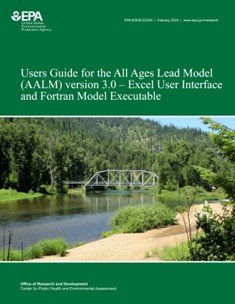
2024-Modeling Lead Exposure Health Risks
EPA released the All Ages Lead Model (Version 3.0). The All Ages Lead Model (AALM) rapidly estimates the effect of lead exposures from media such as air, water, food, dust, or soil on lead concentrations in blood, bone, and other human tissues from birth to 90 years of age. The AALM provides significant advancement in EPA’s commitment to provide risk assessors and risk managers with a model to rapidly evaluate the impact of possible sources of lead in specific human exposure scenarios where there is a concern for human exposure to lead.

2024-ETAP Provides Faster Toxicity Results for Human Health Protection
The EPA Transcriptomic Assessment Product (ETAP) was publicly released in March 2024 following peer review by the Board of Scientific Counselors. ETAP is a human health assessment for chemicals lacking traditional toxicity testing data. Using transcriptomics, which measures gene activity, ETAP determines the daily dose of a chemical where there is likely no appreciable human health risk. It can provide this information in a timeframe of months rather than years.
2023-EPA Studies Mercury in Sediments

EPA researchers have been working with the Region 10 Superfund Division over the past four years providing technical support to develop a remedial investigation for the Black Butte Mine Superfund Site in Cottage Grove, OR. EPA has conducted research on elucidating the complex pathways in which metals, such as mercury, are transported through the watershed and accumulate in the food web. Current efforts are focused on remediation and management strategies to sequester inorganic mercury and reduce biological uptake. This research has led to a number of publications, including a journal article in FY23, “Determining mercury transformation rates with stable isotope additions in three western USA reservoirs.”
2023-Advancing Chemical Safety Testing

EPA researchers developed the EPA Transcriptomic Assessment Product (ETAP) to address the fact that less than a quarter of the tens of thousands of chemicals found in commerce have traditional toxicity or epidemiological data that can inform human health risk assessments. ETAP is a novel human health assessment approach targeting chemicals lacking traditional toxicity testing data. EPA also conducted a Value of Information (VOI) analysis to weigh the public health and economic trade-offs associated with the timeliness, uncertainty, and costs of the ETAP compared to traditional toxicity tests. An EPA Board of Scientific Counselors meeting with a public comment period were held to review and provide recommendations for moving these products forward.
2022- EPA Releases New Provisional Peer Reviewed Toxicity Values
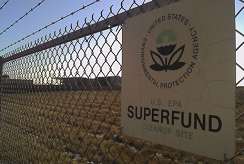
EPA finalized seven Provisional Peer Reviewed Toxicity Value (PPRTV) assessments in 2022. These assessments can be used to characterize the health hazards of chemicals of concern at hundreds of Superfund waste sites.
Basic Information About Provisional Peer-Reviewed Toxicity Values (PPRTVs)
Recent Additions for Provisional Peer-Reviewed Toxicity Values (PPRTVs)
2022- EPA finalizes IRIS Assessment for Perfluorobutanoic Acid (PFBA)
EPA’s IRIS Toxicological Review of Perfluorobutanoic Acid (PFBA) reviews the evidence on the potential cancer and noncancer human health effects resulting from long-term exposure to PFBA. Routes of potential human exposure to PFBA include inhalation of indoor and outdoor air, oral ingestion of contaminated drinking water or food, and dermal contact from products containing PFAS (e.g., stain-resistant fabric, carpets, furniture, nonstick cookware, ski wax, certain leather products, and some personal care products).
2022- EPA releases the final ORD Staff Handbook for Developing IRIS Assessments or IRIS Handbook
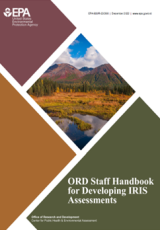
EPA released the final ORD Staff Handbook for Developing IRIS Assessments, or IRIS Handbook in 2022. The IRIS Handbook provides operating procedures for staff developing IRIS assessments, including the application of systematic review approaches. The Handbook ensures consistency within and across IRIS assessments.
ORD Staff Handbook for Developing IRIS Assessments (2022)
2021 - EPA Improves Integrated Science Assessments

EPA released a draft supplement to the particulate matter (PM) Integrated Science Assessment (ISA) to meet Agency deadlines to reconsider PM National Ambient Air Quality Standards. To improve the assessments overall, EPA also commissioned a National Academies of Sciences, Engineering, and Medicine study to examine the causality frameworks for evaluating health and welfare effects.
2021 - EPA Supports Superfund Cleanups
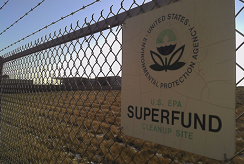
Nine new Provisional Peer Reviewed Toxicity Value (PPRTV) assessments have been provided that can be used to characterize hazardous chemicals of concern at hundreds of Superfund waste sites throughout the country.
Basic Information About Provisional Peer-Reviewed Toxicity Values (PPRTVs)
Provisional Peer-Reviewed Toxicity Values (PPRTVs) Assessments
2021 - EPA Finalizes IRIS Assessment for Tert-Butyl Alcohol (TBA)

EPA’s IRIS Toxicological Review of Tert-Butyl Alcohol (TBA) addressed the potential cancer and noncancer human health effects from exposure to TBA. The findings may be used to make decisions to protect human health. TBA is used in making flavors and perfumes, as a solvent for pharmaceuticals, as paint remover, and as an additive in unleaded gasoline.
IRIS Toxicological Review of Tert-Butyl Alcohol (Tert-Butanol or TBA) (Final Report)
2021 - EPA Finalizes IRIS Assessment for Ethyl Tertiary Butyl Ether (ETBE)
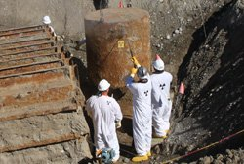
EPA’s IRIS Toxicological Review of Ethyl Tertiary Butyl Ether (ETBE) addressed the potential cancer and noncancer human health effects from exposure to the chemical. The main source of exposure to ETBE in the U.S. is groundwater contaminated by leaking underground storage tanks.
IRIS Toxicological Review of Ethyl Tertiary Butyl Ether (ETBE) (Final Report)
2021 - IRIS Program Offers Updates to Public on Current Assessments

EPA’s IRIS Program Outlook provides up-to-date information on assessments that are currently in development and their projected deliverable dates. These recent updates help keep stakeholders informed of upcoming assessment products and provide the public and research community an opportunity to communicate relevant research to EPA.
2020 - EPA Publishes New Integrated Science Assessment for Oxides of Nitrogen, Oxides of Sulfur and Particulate Matter - Ecological Criteria

EPA’s 2020 assessment is a comprehensive evaluation and synthesis of the most policy-relevant science aimed at characterizing the ecological effects caused by oxides of nitrogen, oxides of sulfur, and particulate matter under the Clean Air Act. The report updates the 2008 assessment and the ecological portion of the 2009 Integrated Science Assessment for Particulate Matter.
2020 - EPA Publishes New Integrated Science Assessment for Ozone
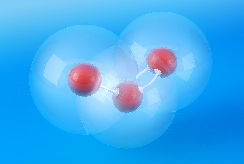
EPA's 2020 assessment is part of the review of the primary (health-based) and secondary (welfare-based) National Ambient Air Quality Standards for ozone and related photochemical oxidants under the Clean Air Act. This report provides critical evaluation and integration of the evidence on health and environmental effects of ozone and updates the 2013 Integrated Science Assessment for Ozone and Related Photochemical Oxidants.
2010s
2019 - EPA Publishes New Integrated Science Assessment for Particulate Matter
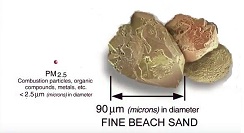
EPA's 2019 Integrated Science Assessment (ISA) for Particulate Matter is part of the review of the primary (health-based) and secondary (welfare-based) National Ambient Air Quality Standards (NAAQS) for particulate matter (PM) under the Clean Air Act. This report represents the current state of the science on the health and non-ecological welfare effects of PM and updates the 2009 Integrated Science Assessment for Particulate Matter.
Integrated Science Assessment (ISA) for Particulate Matter (Final Report, Dec 2019)
2017 - EPA Publishes the Integrated Science Assessment for Sulfur Oxides - Health Criteria

EPA's Health Criteria Integrated Science Assessment (ISA) for Sulfur Oxides (SOx) is part of the Agency’s periodic review of the primary (health-based) National Ambient Air Quality Standard (NAAQS) for SOx. It provides a comprehensive review of the policy-relevant scientific literature published since the last NAAQS review. Overall, findings from recent studies strengthen the conclusions from the previous NAAQS review completed in 2010. An update to the 2008 ecological criteria assessment is currently under development.
Integrated Science Assessment (ISA) for Sulfur Oxides - Health Criteria
Reviewing National Ambient Air Quality Standards (NAAQS): Scientific and Technical Information
2016 - EPA Publishes the Integrated Science Assessment for Oxides of Nitrogen - Health Criteria

EPA's Health Criteria Integrated Science Assessment (ISA) for Oxides of Nitrogen (NOx) is part of the Agency’s periodic review of the primary (health-based) National Ambient Air Quality Standard (NAAQS) for NOx. It provides a comprehensive review of the policy-relevant scientific literature published since the last NAAQS review. Overall, findings integrated from previous and recent studies strengthen the conclusions from the previous NAAQS review completed in 2010. An update to the 2008 ecological criteria assessment is currently under development.
Integrated Science Assessment (ISA) for Nitrogen Dioxide - Health Criteria
Reviewing National Ambient Air Quality Standards (NAAQS): Scientific and Technical Information
2016 - EPA Co-Authors a Report on the Impacts of Climate Change on Human Health

EPA co-authors an assessment that synthesizes climate change impacts on human health with seven other federal agencies, involving 100 experts. The report advances scientific understanding of the impacts of climate change on public health and highlights social and environmental disparities that make some communities particularly vulnerable to climate change. This assessment strengthens and expands understanding of climate-related health impacts by providing a more definitive description of climate-related health burdens in the United States. It builds on the 2014 National Climate Assessment and reviews and synthesizes key contributions to the published literature.
The Impacts of Climate Change on Human Health in the United States: A Scientific Assessment
2014 - EPA Publishes IRIS Assessment of Chronic Inhalation Exposure to Asbestos in Libby, Montana

EPA publishes the Integrated Risk Information System (IRIS) assessment of Libby Amphibole asbestos, a specific type of asbestos found as a consequence of the mining and processing of vermiculite in Libby. Asbestos is a mineral fiber that is found in rocks and soil. Exposure can increase the risk of developing lung disease, including cancer. The toxicological review provides scientific support and rationale for the hazard and dose-response assessment in IRIS pertaining to chronic inhalation exposure to Libby Amphibole asbestos. The assessment supports the Agency clean-up and related risk management initiatives at the Libby Superfund site.
IRIS Toxicological Review of Libby Amphibole Asbestos (Final Report)
Video: Pride and Perseverance: Community Engagement and EPA Cleanup of the Libby Asbestos Superfund Site
2013 - EPA Releases the Exposure Toolbox

EPA develops the Exposure Toolbox to provide a comprehensive resource for those conducting exposure assessments. The EPA Exposure Toolbox is a compendium of exposure assessment tools that links to guidance documents, databases, models, reference materials, and other related resources.
EPA ExpoBox (A Toolbox for Exposure Assessors)
2013 - EPA Publishes the Integrated Science Assessment of Ozone and Related Photochemical Oxidants
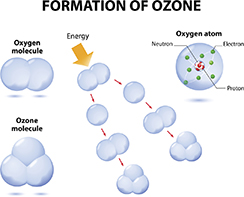
EPA's Integrated Science Assessment (ISA) of ozone (O3) and related photochemical oxidants provides a comprehensive review of the policy-relevant scientific literature published since the last National Ambient Air Quality Standard (NAAQS) review. This ISA provides scientific support for the decision to update the NAAQS for O3 and related photochemical oxidants.
Ozone (O3) Air Quality Standards
2012 - EPA Publishes a Health Assessment for Dioxin
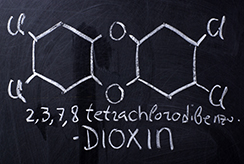
EPA completes its highly-anticipated non-cancer health assessment for dioxin. EPA's final report describes the health effects other than cancer that may result from exposure to 2,3,7,8-tetrachlorodibenzo-p-dioxin (TCDD), the most potent dioxin compound. The assessment also establishes, for the first time, a non-cancer oral reference dose for TCDD.
2012 - EPA Teams with Stakeholders to Implement Renovation-focused Health Impact Assessment

EPA collaborates with stakeholders in Massachusetts to implement one of EPA's first Health Impact Assessments, and the first school renovation-focused Health Impact Assessment in this emerging field.
Gerena School Health Impact Assessment (HIA) Final Report
2010 - EPA Publishes an Assessment of Exposure to Polybrominated Diphenyl Ethers

EPA publishes a comprehensive assessment of exposure to polybrominated diphenyl ethers (PBDEs), a class of persistent organic pollutants, for people living in the United States. EPA has a PBDE workgroup comprised of scientists from several program offices to study production, use, alternatives, environmental fate, exposure, and health effects of the pollutant. This report addresses the exposure assessment needs identified by the PBDE Workgroup in 2006.
An Exposure Assessment of Polybrominated Diphenyl Ethers (PBDE) (Final Report)
2010 - EPA Publishes the Integrated Science Assessment for Carbon Monoxide
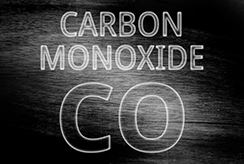
EPA's Integrated Science Assessment (ISA) for Carbon Monoxide (CO) provides a comprehensive review of the policy-relevant scientific literature published since the last National Ambient Air Quality Standard (NAAQS) review. This ISA provides scientific support for the decision to retain the NAAQS for CO.
Integrated Science Assessment (ISA) for Carbon Monoxide
Carbon Monoxide (CO) Air Quality Standards
2000s
2009 - EPA Studies Fate and Transport of Perfluorinated Chemical

EPA's research demonstrates that fluorotelomer-based polymers degrade in soil to form perfluorooctanoic acid. This research provides scientific support for a Significant New Use Rule promulgated by EPA in 2012 under the Toxic Substances Control Act.
Characterizing Fate and Transport of Perfluorinated Chemical
2009 - EPA Launches the Health and Environmental Research Online Database

EPA's Health and Environmental Research Online (HERO) is a database of studies and other references used to develop EPA's risk assessments. HERO includes more than three million scientific references and associated data from the peer-reviewed literature used by EPA to develop reports that support critical agency decision-making for chemical regulation. With HERO, the public can access the scientific information and data that inform Agency decisions.
Health and Environmental Research Online: a Database of Scientific Studies and References
2009 - EPA Publishes the Integrated Science Assessment for Particulate Matter

EPA's Integrated Science Assessment (ISA) for particulate matter (PM) provides a comprehensive review of the policy-relevant scientific literature published since the last National Ambient Air Quality Standard (NAAQS) review. This ISA provides scientific support for updates to the NAAQS for PM.
Integrated Science Assessment (ISA) For Particulate Matter (Final Report, Dec 2009)
Particulate Matter (PM) Air Quality Standards
2008 - EPA Replaces Air Quality Criteria Documents with Integrated Science Assessments

EPA revises the process for evaluating the criteria air pollutants, replacing Air Quality Criteria Documents with Integrated Science Assessments.
Integrated Science Assessments (ISAs)
2006 - EPA Publishes the Air Quality Criteria Document for Ozone

EPA's air quality criteria document for ozone (O3) and related photochemical oxidants, provides scientific support for updates to the National Ambient Air Quality Standard for this criteria air pollutant. The document critically evaluates and assess the latest scientific data associated with exposure to the concentrations of O3 found in ambient air. Emphasis is placed on the presentation of health and environmental effects data; however, other scientific data are presented and evaluated in order to provide a better understanding of the nature, sources, distribution, measurement, and concentrations of O3 in the environment.
Air Quality Criteria for Ozone and Related Photochemical Oxidants (Final Report, 2006)
Ozone (O3) Air Quality Standards
2005 - EPA Updates the Guidelines for Cancer Risk Assessment

EPA guidelines provide EPA staff with revised guidance for developing and using cancer risk assessments. They also provide the public with basic information about the Agency's risk assessment methods.
Guidelines for Carcinogen Risk Assessment
2004 - EPA Updates the Air Quality Criteria Document for Particulate Matter
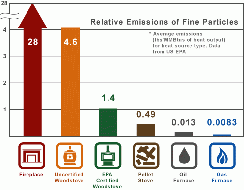
EPA publishes the air quality criteria document for particulate matter (PM), providing scientific support for revision to the National Ambient Air Quality Standard for this criteria air pollutant. The revised air quality criteria document critically evaluates and assess the latest scientific data associated with exposure to the concentrations of PM found in ambient air. Emphasis is placed on the presentation of health and environmental effects data; however, other scientific data are presented and evaluated in order to provide a better understanding of the nature, sources, distribution, measurement, and concentrations of PM in the environment.
Air Quality Criteria for Particulate Matter (Final Report, 2004)
Particulate Matter (PM) Air Quality Standards
1990s
1997 - EPA Publishes the Mercury Study Report to Congress
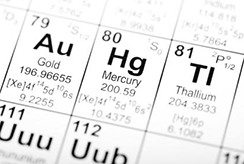
Mercury is an air toxic or hazardous air pollutant regulated by the EPA under the Clean Air Act. Mercury has been found to cause health effects at high levels. EPA's Mercury Study provides an assessment of the magnitude of U.S. mercury emissions by source, the health and environmental implications of those emissions, and the availability and cost of control technologies. As the state-of-the-science for mercury is continuously and rapidly evolving, this report is a snapshot of EPA's understanding of mercury in 1997.
Mercury Study Report to Congress
Mercury and Air Toxics Standards (MATS)
1996 - EPA Publishes Air Quality Criteria Document for Particulate Matter and Ozone

EPA publishes the air quality criteria document for particulate matter (PM) and ozone (O3), providing scientific support for updates to the National Ambient Air Quality Standards for these criteria air pollutants. The revised air quality criteria documents critically evaluate and assess the latest scientific data associated with exposure to the concentrations of PM, O3, and related photochemical oxidants found in ambient air. Emphasis is placed on the presentation of health and environmental effects data; however, other scientific data are presented and evaluated in order to provide a better understanding of the nature, sources, distribution, measurement, and concentrations of these pollutants in the environment.
Air Quality Criteria for Particulate Matter (Final Report, 1996)
Particulate Matter (PM) Air Quality Standards
Air Quality Criteria For Ozone And Related Photochemical Oxidants Volume II of III
Air Quality Criteria for Ozone and Related Photochemical Oxidants Volume III of III
Ozone (O3) Air Quality Standards
1995 - EPA Releases Benchmark Dose Guidelines

EPA publishes the initial guideline on the use of the benchmark dose approach for assessing noncancer health risk. In 2000, EPA releases Benchmark Dose Software (BMDS) as a resource to help characterize the relationship between exposures to environmental pollutants or toxicants and observed adverse health outcomes. Researchers use the models in BMDS to estimate reference doses, reference concentrations, and slope factors. These are used along with other scientific information to set standards that protect human health from the effects of chemical exposures. Benchmark dose methods are now used worldwide for dose-response analysis to support chemical risk assessments and regulatory actions.
About Benchmark Dose Software (BMDS)
Benchmark Dose Software (BMDS) Release History (1995-2017)
1994 - EPA Publishes Updated Methods for Assessing the Toxicity of Inhaled Chemicals

EPA releases a report describing the Agency's methodology for estimating inhalation reference concentrations (RfCs) in quantitative dose-response assessment of chronic noncancer toxicity for individual inhaled chemicals. Noncancer toxicity refers to adverse health effects other than cancer and gene mutations. The report gives information to be considered in selecting key studies for RfC derivation, provides an overview of the respiratory system and its intra- and interspecies variables, and discusses areas of uncertainty and data gaps in relation to the proposed methodology. This report builds on Interim Methods for Development of Inhalation Reference Concentrations published in 1990.
1993 - EPA Publishes Air Quality Criteria Document for Oxides of Nitrogen
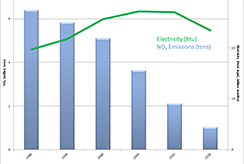
EPA's air quality criteria document for oxides of nitrogen (NOx) gives scientific support for revisions to the National Ambient Air Quality Standard for this category of air pollutants. This document focuses on a review and assessment of the effects on human health and welfare of nitric oxide and nitrogen dioxide. Although the emphasis is on presentation of health and welfare effects data, other scientific data are presented in order to provide a better understanding of NOx in the environment.
Air Quality Criteria for Oxides of Nitrogen (Final Report, 1993)
Reviewing National Ambient Air Quality Standards (NAAQS): Scientific and Technical Information
1980s
1989 - EPA Develops the Reference Concentration Method for Inhalation Exposure
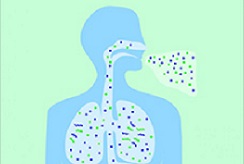
A reference concentration (RfC) is a non-cancer risk estimate for chronic inhalation exposure to environmental agents for use in chemical assessments. A RfC is an estimate, with uncertainty spanning perhaps an order of magnitude, of continuous exposure to an agent for humans, including sensitive subgroups, that is likely to be without significant risk of harmful effects during a lifetime. This document focuses on toxicological issues central to the development of an approach for the quantitative assessment of risks of health effects other than cancer and gene mutations for inhaled agents and to the development of an interim methodology for the estimation of RfCs, earlier known as inhalation reference dose.
Interim Methods for Development of Inhalation Reference Concentrations
1989 - EPA Publishes the First Exposure Factors Handbook
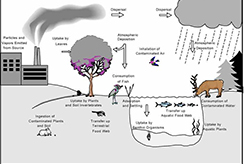
EPA publishes the first Exposure Factors Handbook that provides information on various physiological and behavioral factors commonly used in assessing exposure to environmental chemicals. EPA released the latest full edition of the Exposure Factors Handbook in 2011. Beginning in October 2017, EPA releases individual chapter updates. This allows risk assessors to get the latest information as new data becomes available.
About the Exposure Factors Handbook
1988 - EPA Makes the IRIS Database Public

EPA makes the IRIS database available to the public, first by an email system and later by the National Library of Medicine's TOXNET system and the National Technical Information Service. The IRIS Program continues to evolve with the state of the science to produce high-quality evidence-based assessments and to provide an increasing number of opportunities for public input into the IRIS process.
How to access TOXNET information
National Technical Information Service (NTIS)
1985 - EPA Creates the Integrated Risk Information System
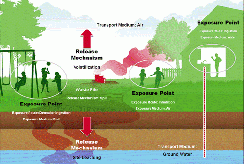
EPA creates the Integrated Risk Information System (IRIS) Program to foster consistency in the evaluation of chemical toxicity across the Agency and provide an internal database of human health assessments for chemicals found in the environment. The IRIS Program has fostered consistency in the evaluation of chemical toxicity across the Agency and become an important public resource as well. The IRIS Program has evolved to produce high-quality evidence-based assessments and increase opportunities for public input into the IRIS review process.
A History of the Integrated Risk Information System (IRIS)
Integrated Risk Information System
1970s
1971 - EPA Establishes National Standards on Six Air Pollutants
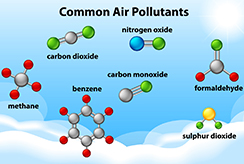
EPA announces national standards on six common pollutants: sulfur oxides, particulate matter, carbon monoxide, photochemical oxidants, nitrogen oxides and hydrocarbons. The scientific basis for these standards is based on Air Quality Criteria documents prepared for each of the pollutants.
